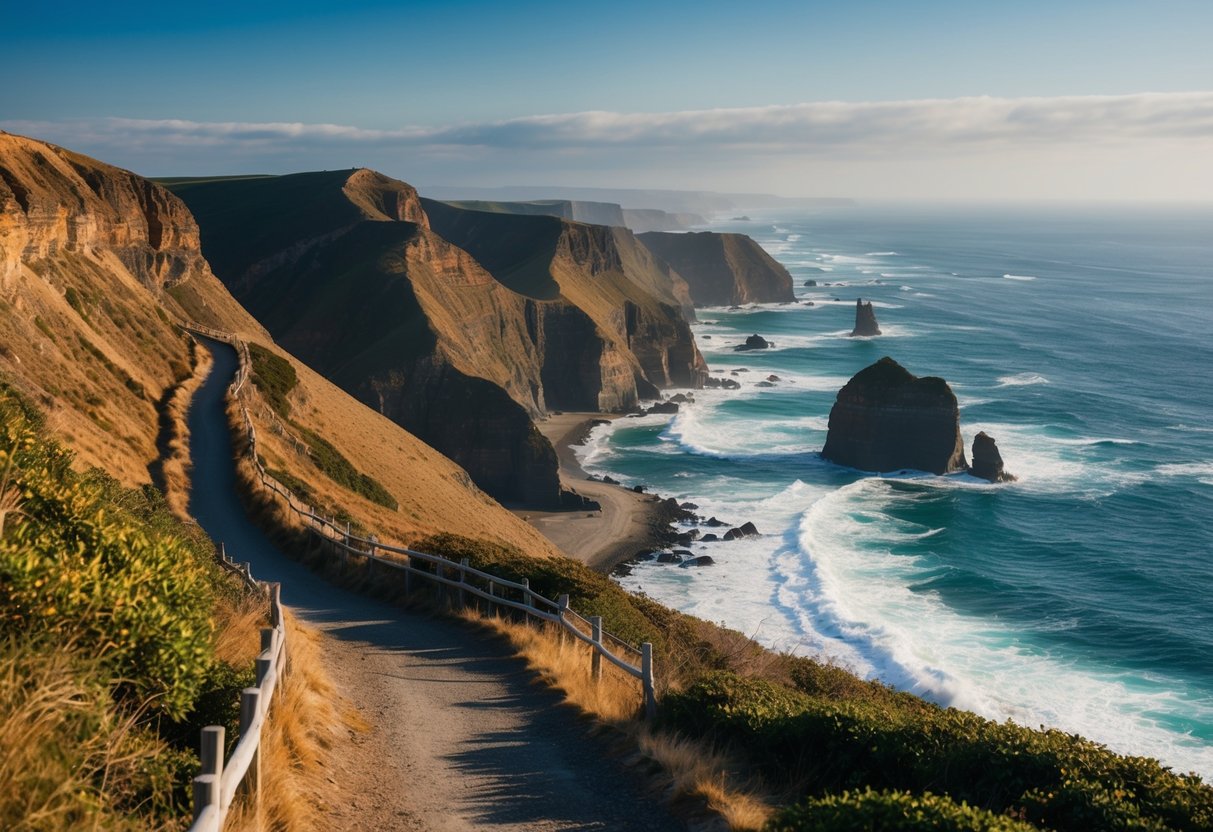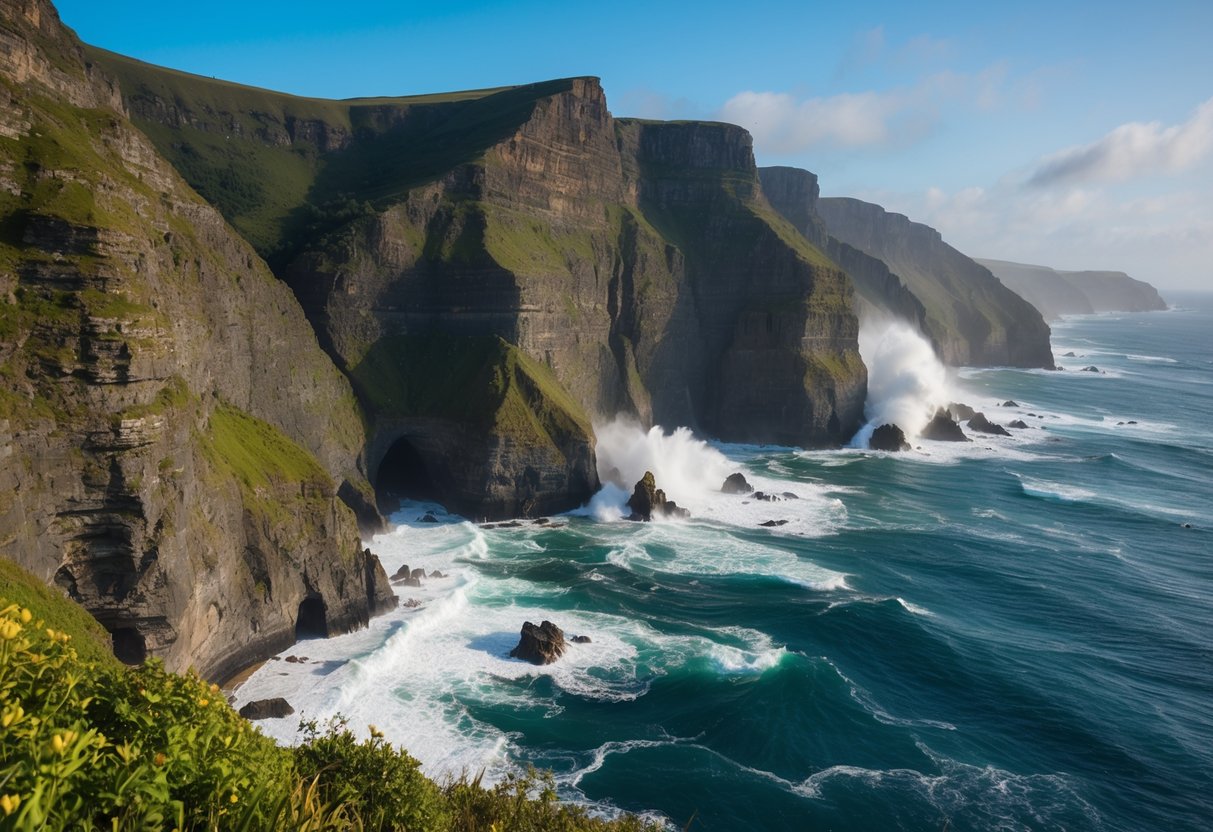
Discovering the Beaches of Fraser Island
Fraser Island, known as K’gari, is the world’s largest sand island. The island is a true natural marvel and offers extraordinary beaches that seem to go on forever. White sandy stretches make for a perfect backdrop, particularly along iconic spots like Lake McKenzie and Eli Creek.
The K’gari Great Walk is a multi-day trek that showcases the island’s immense natural beauty. Hikers traverse ancient rainforests, sand dunes, and freshwater lakes. Each viewpoint offers a unique panorama, from tranquil beaches to dense interiors teeming with wildlife. The rugged beauty and serene environment of Fraser Island ensure an unforgettable adventure.
Tasmania’s Wilderness Coast: Walks and Wildlife Encounters

Tasmania offers extraordinary coastal hikes rich in both dramatic landscapes and diverse wildlife. The Three Capes Track showcases stunning cliffs, while Bruny Island offers serene paths with opportunities for marine life viewing.
Adventure on the Three Capes Track
The Three Capes Track is a standout in Tasmania’s hiking scene, weaving through the Tasman National Park. It covers 46 kilometers over four days, presenting hikers with sheer cliffs and sweeping ocean vistas. This managed walk provides well-marked paths, cabins, and knowledgeable guides.
As hikers traverse, they often glimpse fantastic formations like The Blade or Cathedral Rock. Eucalyptus forests add a touch of mystery and wildlife like echidnas and wallabies can frequently be seen. Marine life enthusiasts may spot seals or dolphins from the cliff edges, enhancing the adventure.
Bruny Island’s Coastal Hikes
Bruny Island, a short ferry ride from Tasmania’s mainland, is a haven for tranquil walks and wildlife. The island’s South Bruny National Park features hikes with views of diverse landscapes, from sandy beaches to rugged cliffs. The Labillardiere Peninsula track is particularly known for its coastal beauty and bird-watching.
The island hosts various bird species, including the rare white morph of the grey goshawk. Marine life is active here too, with the possibility of spotting penguins and seals along the shoreline. Trails like Fluted Cape offer serene walks with stunning views of the Tasman Sea.
Western Australia’s Coastal Trails: Beyond the Ordinary
Western Australia’s coastal trails are known for their stunning scenery and unique experiences. The Cape to Cape Track offers breathtaking ocean views, while the Kangaroo Island Wilderness Trail provides a wild encounter with unique rock formations and diverse wildlife.
The Cape to Cape Track Experience
Stretching 123 kilometers between Cape Naturaliste and Cape Leeuwin, the Cape to Cape Track is a hallmark of Western Australia’s coastal adventures. Hikers can enjoy dramatic cliffside vistas and secluded beaches along this trail. With diverse landscapes including forests and rocky ridges, it caters to trekkers interested in varied scenery.
The track also holds cultural significance, passing through areas rich in Indigenous history. The journey is typically done over five to seven days, making it accessible for both seasoned hikers and adventurous novices. Equipped campsites and nearby towns provide options for breaks and restocking supplies. Wildlife such as kangaroos and various bird species add a delightful element to the trek.
Wild Splendor of the Kangaroo Island Wilderness Trail
The Kangaroo Island Wilderness Trail is a must-see for enthusiasts seeking raw natural beauty. The trail, approximately 61 kilometers long, winds through rugged coastlines and dense bushland, providing an immersive experience in the island’s unique ecosystem. Hikers can see notable features including the iconic Remarkable Rocks and Admirals Arch.
This trail offers a chance to observe native wildlife like koalas and sea lions in their natural habitat. Walking the trail typically takes about five days, encouraging a deeper connection with the surroundings. The terrain varies and includes grassy paths, forested areas, and rocky sections, thus keeping every segment of the hike engaging. It is advisable to be prepared for weather changes, as coastal conditions can be unpredictable.